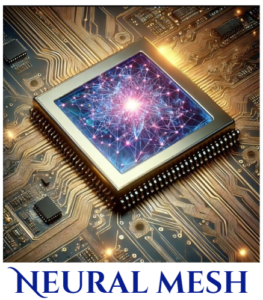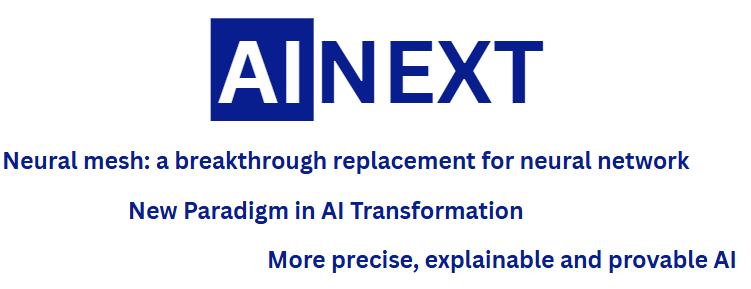

Precise AI - The Neural Mesh
The goal is to introduce the Neural Mesh as a new AI computational paradigm to replace conventional layered neural network structures in order to obtain a more flexible, unstructured, mesh-like configuration of neural connections amenable to cutting-edge convex optimization-based (CO) training methods.
The outcome is the establishment of a mathematical basis for a groundbreaking new paradigm, which we term as the Neural Mesh, and which transcends the constraints imposed by the conventional layer-net-layer- net neural network structure, while also incorporating the cutting-edge methodologies of approximation and optimization theories.
Key Members
• Marianna Eisenberg-Nagy (WP 1 Coordinator) , B marianna.eisenberg-nagy@uni-corvinus.hu;
• Tibor Illes, tibor.illes@uni-corvinus.hu
• Yurii Nesterov
• Petra Renáta Rigó petra.rigo@uni-corvinus.hu
• Goran Lesaja, goran@georgiasouthern.edu
• Béla András Frigyik, frigyik.andras@uni-obuda.hu
• Dávid Tollner, tollner.david@kjk.bme.hu
Explainable AI
The goal is to deliver novel transformation methods to generate alternative, linguistically informative representations of AI decisions, enhancing human intuition and understanding.
The aim is to establish a framework that can effectively convert a NN-implemented input-output mapping f (p), or a set of such mappings fk(p), into Sk N ⊠ n=1 wn(pn), where the shape of the functions wn(pn) can be predetermined by humans. This will allow users to define and customize linguistically meaningful represen- tations of the input – output values assigned through the resulting linguistic IF – THEN type rules determined by the tensor product operator ⊠. Further, this process will allow for the identification and regulation of “principal” linguistic rules – i.e., the number of linguistic rules to be extracted can be controlled through a parameter. This will enable users to shift between micro-level and macro-level mappings. It is imperative that the algorithm be both effective and computationally efficient.
Key Members
• Péter Baranyi, peter.baranyi@uni-corvinus.hu
• Ádám Csapó, adambalazs.csapo@uni-corvinus.hu
• Anna Sudár, anna.sudar@uni-corvinus.hu
• Ildikó Horváth, ildiko.horvath@uni-corvinus.hu
• Borbála Berki borbala.berki@uni-corvinus.hu
Provable AI
The goal is to deliver novel transformation methods to generate alternative representations suitable for rigorous mathematical verification-based system control design and analysis.
The aim of is to derive a transformation framework capable of transforming a given input-output mapping of a NN or Neural Mesh to a polytopic representation with the absolute minimum number of compo- nents, or to a polytopic representation that allows for further reductions with minimal approximation error. In contrast to WP 2, the goal is to find the best approximation irrespective of whether functions wn(pn) have a linguistic meaning. Further, the transformation will optimize the convex hull of the resulting model for LMI based system control analysis.
A further outcome is a framework that can be used to systematically reason, within the data-driven regime, about the stability and safety of an NN or a Neural Mesh. This will have important applications in the control of complex phenomena, such as those encountered in high performance flight, financial systems, and infectious disease dynamics.
These two approaches will be integrated (but functionally and at the deeper level of mathematical formalisms) into a single comprehensive framework for both data and model driven cases
Key Members
• Mehran Mesbahi
• Péter Baranyi, peter.baranyi@uni-corvinus.hu
Proof-of-Concept and Innovation
The goal is to develop proof-of-concept applications to showcase the benefits of our frameworks focusing on PEP principles investigated in WP 1,2 and 3. CUHK will especially focus on speech translation technologies and medical applications within the Neural Mesh context. Within these areas, team members from CUHK already have available to them a self-developed LLM and a growing ecosystem of supporting in-house technologies for speech translation, speech-based rehabilitation and other health-related applications. Technological acceptance of these solutions will also be investigated, allowing for a credible case to be made to potential investors following the project, thereby helping to integrate the results into commercial products.
To demonstrate the results of the above, we plan to provide solutions to benchmark problems of increasing complexity, as well as develop proof-of-concept applications within the fields of speech translation and health/medicine. Among the benchmarks we will consider, the simplest ones include those that have been used for decades, such as the MNIST, CIFAR, the California Housing, and Wine Quality datasets. The more complex benchmarks are the datasets widely used today, like ImageNet, SuperGLUE, and MMLU. The simpler benchmarks will be valuable for gaining deeper insights into the benefits and potential limitations of our frameworks, as they yield interpretable results and are already well understood. This will help us iterate on our methods more efficiently. On the other hand, evaluating on complex benchmark problems will allow us to highlight the advantageous properties of our results in terms of the three aspects of precision, explainability and provability.
Besides the above benchmarks, we will also develop different applications to showcase our results. CUHK will focus on both speech technology applications and medical applications in the Hungarian context. Within these domains, team members at CUHK already have years of experience with and a deep technical know-how in developing speech-based diagnostics tools (e.g., for dysarthria, or neurocognitive disorders such as Alzheimer’s Disease), as well as in developing language models in well-defined areas such as legal or financial domains. Within this project, CUHK will apply their expertise combined with the different PEP AI frameworks to showcase the Precision, Explainability and Provability related aspects of custom-developed speech-based diagnosis and translation models. In these education, speech and medical domains, high precision reflects the ability of the system to provide only information that is objectively and factually correct, while explainability revolves around its ability to “explain its work” in terms of sources and other implicit notions that were instrumental in producing the result. Finally, provability in this context refers to our ability to prove that the behavior of the system will not deviate in any meaningful way from the scope for which it was developed. All three criteria will be thoroughly investigated with respect to the proof-of-concept applications.
The factors determining the technology acceptance of PEP AI solutions can be detected using marketing science models (e.g., TAM and extended versions), quantitative sampling (e.g., CAWI), and covariance-based structural equation modeling (e.g., CB-SEM). In addition, the conceptual description of a fine-tuned AI maturity model will also be a novel feature of current project. With this, the social perceptions of the technology, and the criteria for successful technology-acceptance and diffusion will be determined. The project will also address the application of the PEP AI principles in the context of the EU AI Act.
Key Members
• Helen Meng
• Yeung Yam
• Anna Sudár
• Ildikó Horváth
• Borbála Berki
Dissemination and Project Management
KPIs for Organizing Conferences and Exhibitions:
Number of international Conferences: 2 – Number of international Exhibitions: 2.